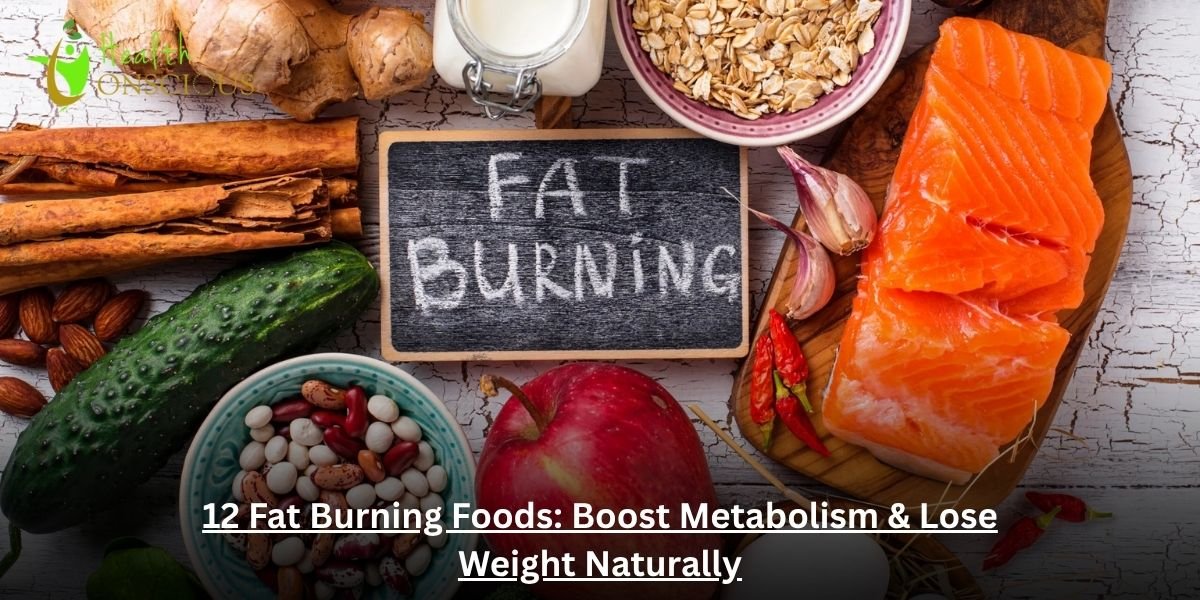The concept of fat burning foods often sparks debate, but it’s a well-researched area of nutrition science. Certain foods possess unique properties that can accelerate your metabolism, enhance fat oxidation, and promote a feeling of fullness, making them valuable allies in any weight management journey.
This guide explores 12 such foods, offering unique, research-backed insights to help you make informed dietary choices.
What are fat-burning foods?
Foods that help burn fat are not miracle solutions that cause instant weight loss on their own. Instead, they are foods that influence the body’s metabolic processes in a way that increases calorie expenditure or reduces overall calorie intake. This can be achieved through a high thermic effect, which means the body uses more energy to digest them, or by promoting satiety, which keeps you feeling full longer.
They typically contain high levels of protein, fiber, or specific bioactive compounds that directly impact how your body uses and stores energy. By incorporating these items into a balanced diet, you can create a more efficient metabolic environment.
12 Foods to Boost Your Metabolism
1. Fatty Fish
Rich in protein and a potent source of omega-3 fatty acids, fatty fish like salmon and mackerel are highly beneficial for metabolism.
Studies published in the International Journal of Obesity show that omega-3s can significantly reduce inflammation, a factor often linked to obesity and metabolic dysfunction.
The high-quality protein also supports the thermic effect of food, boosting calorie burn during digestion.
2. MCT Oil
Medium-chain triglycerides (MCTs), present in coconut oil and supplements, are special fats processed by the body differently from regular fats. They travel directly to the liver, where they are converted into ketones, which can be used as immediate energy or to support an increased resting metabolic rate.
Research from the American Journal of Clinical Nutrition indicates that MCTs can enhance fat oxidation and energy expenditure compared to long-chain triglycerides.
3. Coffee
Coffee contains caffeine, a natural stimulant widely recognized for enhancing metabolism.
A meta-analysis in the journal Obesity Reviews found that caffeine consumption can significantly increase resting metabolic rate and promote fat oxidation.
Regular coffee intake has been associated with a greater rate of weight loss over time.
4. Green Tea
Green tea contains a powerful antioxidant known as epigallocatechin gallate (EGCG), which has been extensively studied for its metabolic benefits.
EGCG, when combined with the caffeine naturally present in the tea, has a synergistic effect that can increase fat oxidation and energy expenditure.
Clinical trials have shown that green tea extract can lead to modest reductions in body weight and body fat.
5. Oolong Tea
Like green tea, oolong tea contains both caffeine and catechins, but in different ratios.
A study in the Journal of Nutrition found that oolong tea may increase energy expenditure and promote fat oxidation more than green tea.
The distinct fermentation process of oolong tea may also give it unique properties that activate specific enzymes responsible for fat breakdown.
6. Whey Protein
Whey protein, produced during the cheesemaking process, is among the most powerful nutrients for increasing metabolic rate. Its high protein content provides a significant thermic effect, meaning the body expends a considerable amount of energy to break it down.
Moreover, whey is rich in amino acids that promote muscle growth, which in turn increases your overall resting metabolic rate.
7. Eggs
Eggs are a perfect example of a food with a high thermic effect due to their excellent protein quality. Eating eggs for breakfast can increase feelings of fullness and reduce calorie intake throughout the day.
A study published in the journal Nutrition Research found that participants who ate eggs for breakfast consumed fewer calories over 24 hours compared to those who ate a bagel.
8. Greek Yogurt
Greek yogurt is an exceptional source of protein and probiotics, both of which are beneficial for weight management.
The protein helps promote satiety and increase the thermic effect of food, while the probiotics support a healthy gut microbiome.
A balanced gut environment has been linked to improved metabolism and a lower body mass index (BMI), according to research in the journal Nature Reviews Endocrinology & Metabolism.
9. Olive Oil
A cornerstone of the Mediterranean diet, olive oil is a monounsaturated fat that has been shown to support metabolic health.
Research in the journal Diabetes Care suggests that a diet rich in olive oil can improve metabolic parameters and aid in weight loss.
Olive oil is a healthy fat that helps increase feelings of fullness and can reduce the overall glycemic load of a meal.
10. Legumes
Legumes, including beans, lentils, and chickpeas, are packed with both protein and soluble fiber, a combination that has powerful effects on satiety and metabolism.
Fiber helps slow down digestion, which prevents rapid spikes in blood sugar and keeps you feeling satisfied for a longer time.
A meta-analysis in the American Journal of Clinical Nutrition found that consuming legumes can lead to a small but significant reduction in body weight and body fat.
11. Lean Meats
Lean protein sources such as chicken breast and lean beef have the highest thermic effect of all macronutrients, meaning your body burns a significant amount of calories just to digest them.
Maintaining a high protein intake is crucial during weight loss to preserve muscle mass. Since muscle tissue burns more calories at rest than fat tissue, this is a key strategy for maintaining a healthy metabolic rate.
12. Chili Peppers
The spicy heat from chili peppers comes from a compound called capsaicin, which has been shown to have a mild but measurable effect on metabolism. Capsaicin can temporarily increase metabolic rate and promote fat oxidation.
Furthermore, some studies suggest that capsaicin may help curb appetite and reduce calorie intake.
Closing Lines
Incorporating these fat burning foods into your diet is a powerful and natural way to support your weight loss goals. By focusing on nutrient-dense options that boost metabolism, increase satiety, and provide essential nutrients, you’re setting yourself up for success.
Remember that these foods that burn fat work best as part of a balanced diet and an active lifestyle. Making small, consistent changes in your eating habits can lead to significant results over time.
FAQs
Can these foods help me lose belly fat specifically?
While no food can “spot-reduce” fat, many of these foods—especially those high in protein and healthy fats—are linked to a reduction in overall body fat, including in the abdominal area.
Do I need to eat all of these foods to see results?
No, you don’t. The key is variety and consistency. Incorporating a few of these foods into your meals regularly is what will make a difference over time.
Are these foods safe for everyone?
Most of these foods are safe for the general population. However, if you have food allergies or specific health conditions, it’s always best to consult with a doctor or a registered dietitian before making significant changes to your diet.
What is the most important factor in a fat-burning diet?
The most important factor is consistency. A balanced diet of whole foods, combined with regular physical activity, is the most effective and sustainable way to achieve and maintain weight loss.



